This will show you how to remote control Android devices with Mac computers.
Set Up Android for Being Controlled
I recommend root for this. You can do it without root however.
Download VMLite VNC Server from the Google Play Store here. It costs , but it will be a one-time purchase given that all devices are signed into the account or are on an account linked to a Family Library with it purchased.
After you install and open it, you can simply start the server if you are rooted. It justs asks for SuperSU permissions:
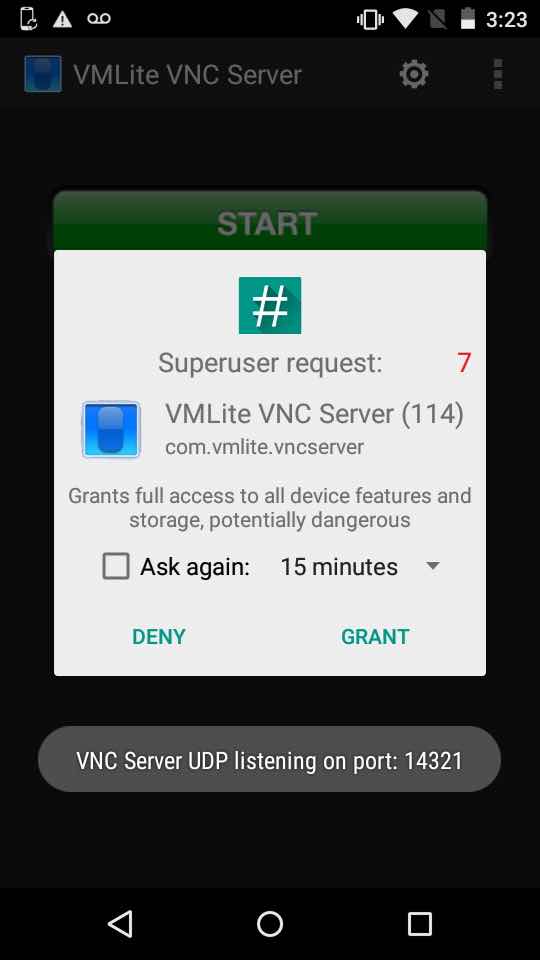
Your IP then appears. Take note of this for connecting in the future. If you would like to change this IP to a static IP, you need to set up DHCP reservations on your router.
If you are not rooted, you need to download the Android App Controller from their website and follow the instructions. This requires a computer.
Go to the settings to configure the server.
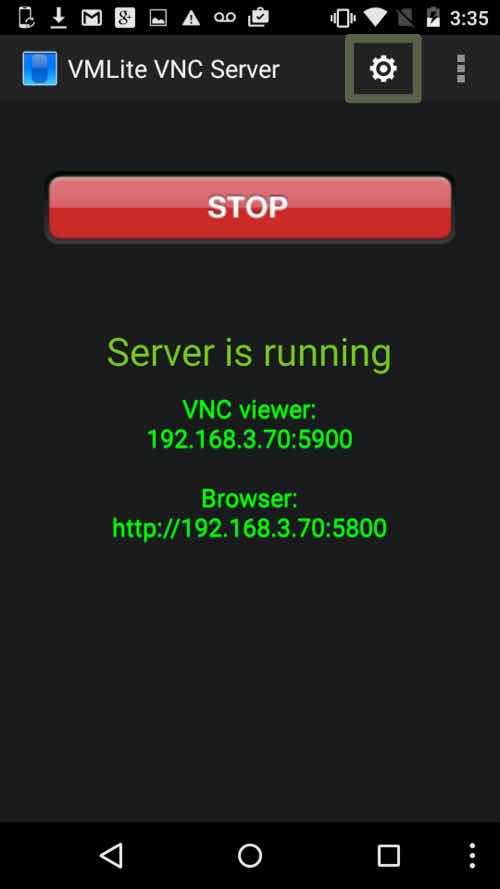
Change the port from 5901 to 5900. This way, you don’t have to enter the port into the viewer.
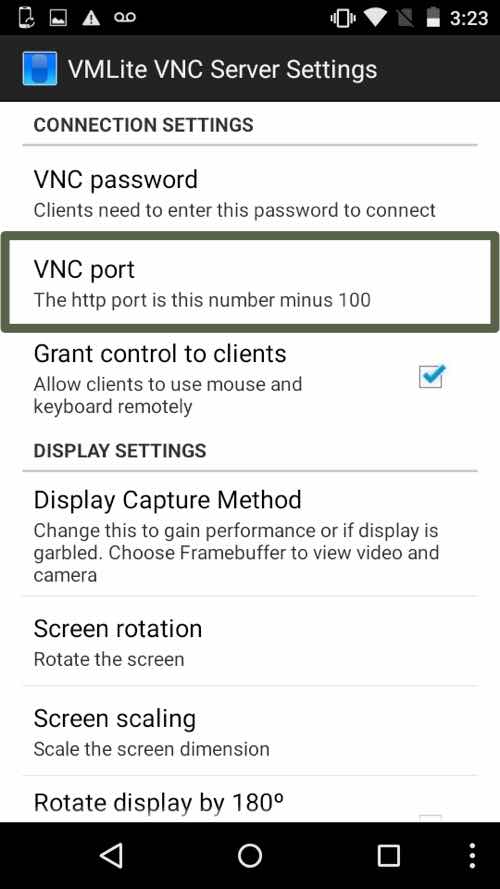
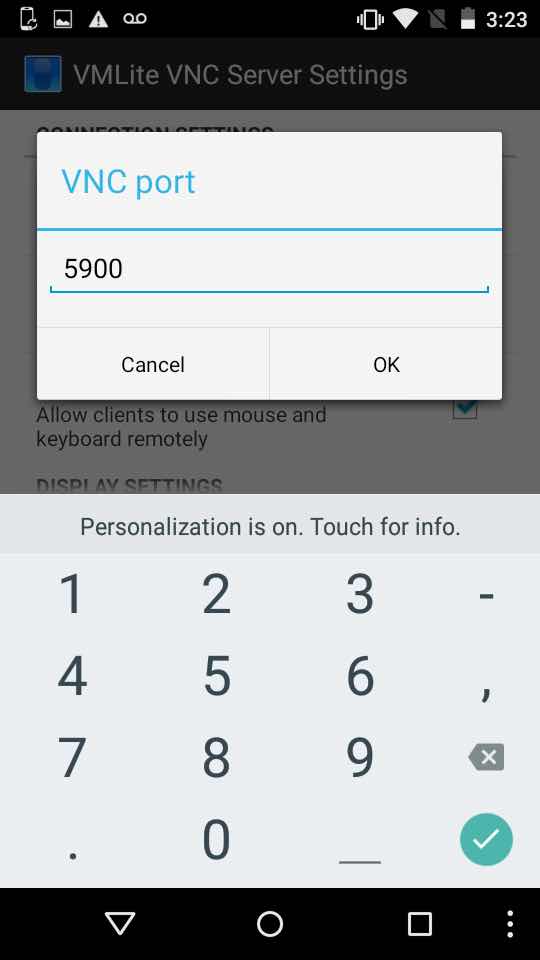
Check keep screen on and auto correct rotation. I also usually keep the toolbar at the bottom checked.
Check start server on boot if you are rooted. Otherwise, it doesn’t actually start on boot and you have to follow the process from their controller each boot.
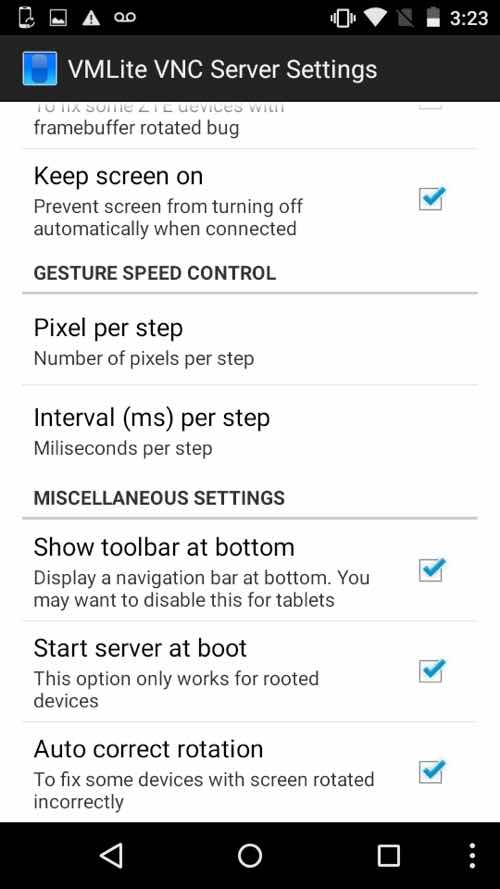
It will then ask you to restart the server.
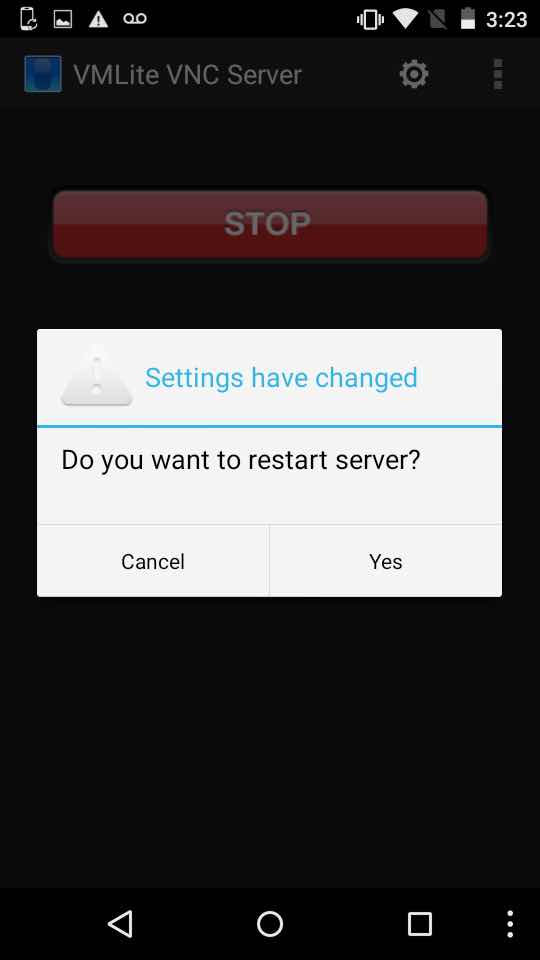
Your Android is now ready for access with its IP address.
Demo
https://www.youtube.com/watch?v=eXfGS8UOOtw
Set Up Mac for Controlling
Make sure your Mac is on the same network as the device you are controlling – more on connecting outside the network below.
Download RealVNC Viewer for Mac here.
Once installed and opened, configure the preferences. Go to your toolbar and navigate to preferences for VNC Viewer:
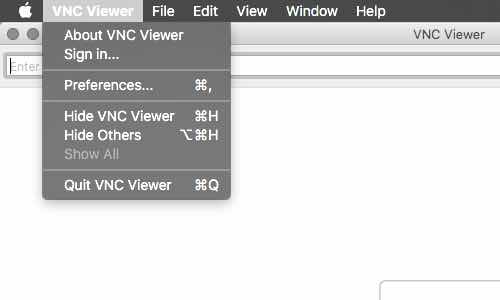
Go to the expert tab.
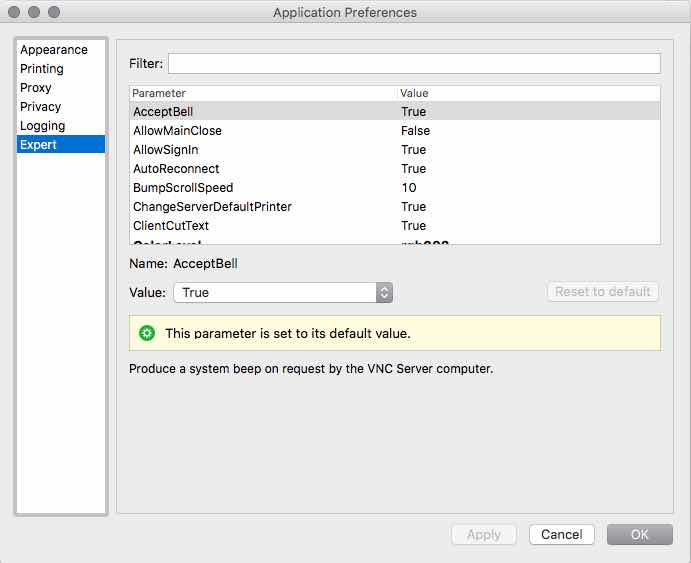
Search or find ColorLevel and set to rgb222 for a balance between speed and visibility:
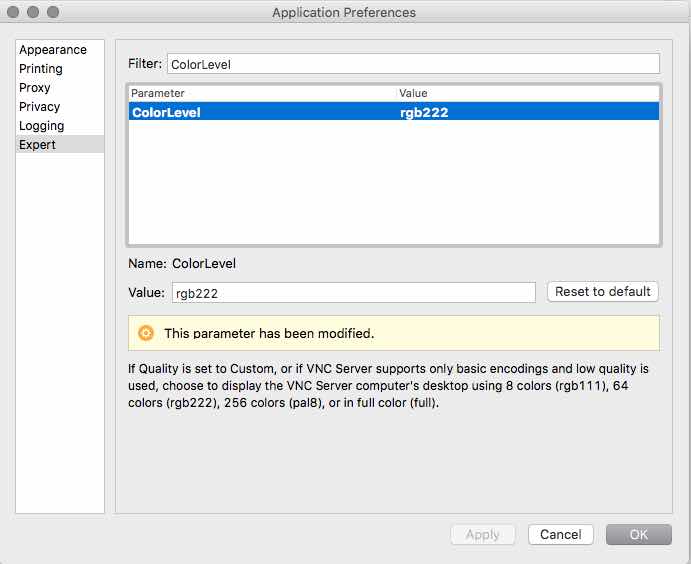
Search WarnUnencrypted and set to false.
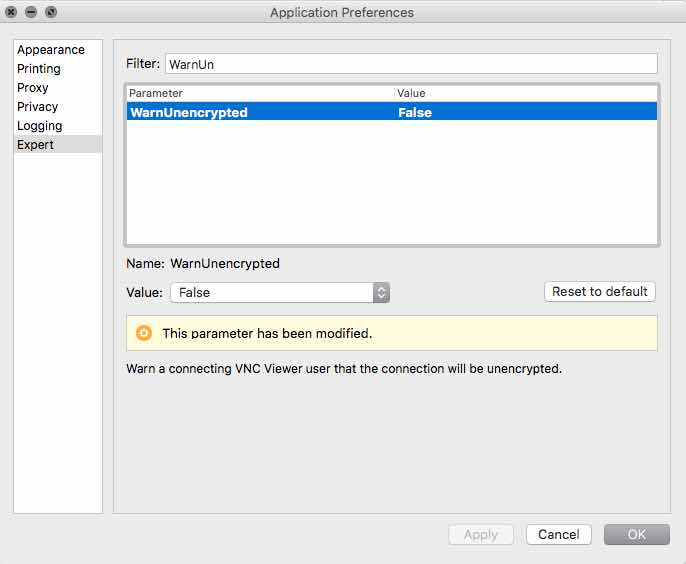
Search Quality and set to custom.
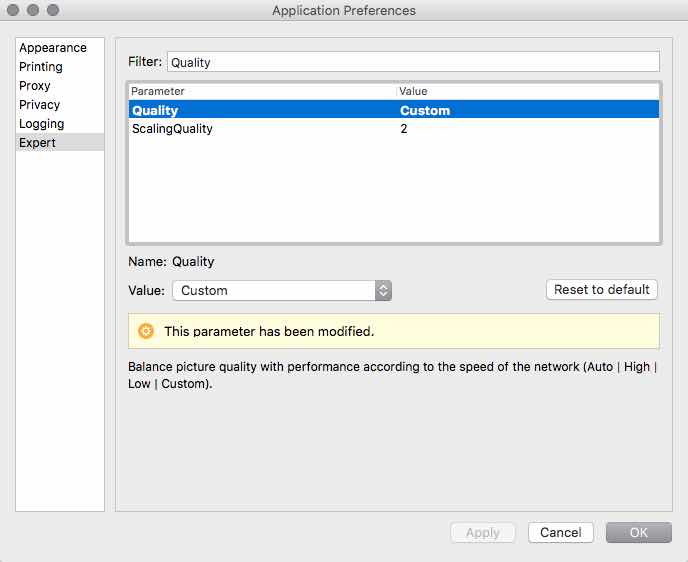
Apply changes and close. These settings will now be used for all connections made and saved on this computer.
Those are basic parameters I always change. You may want to change other things such as default scaling in that menu.
Now simply connect to do the device. Enter its IP address from above into the search bar and click enter (e.g. device 19 has IP ending in 19).
Enter the password and check remember password.
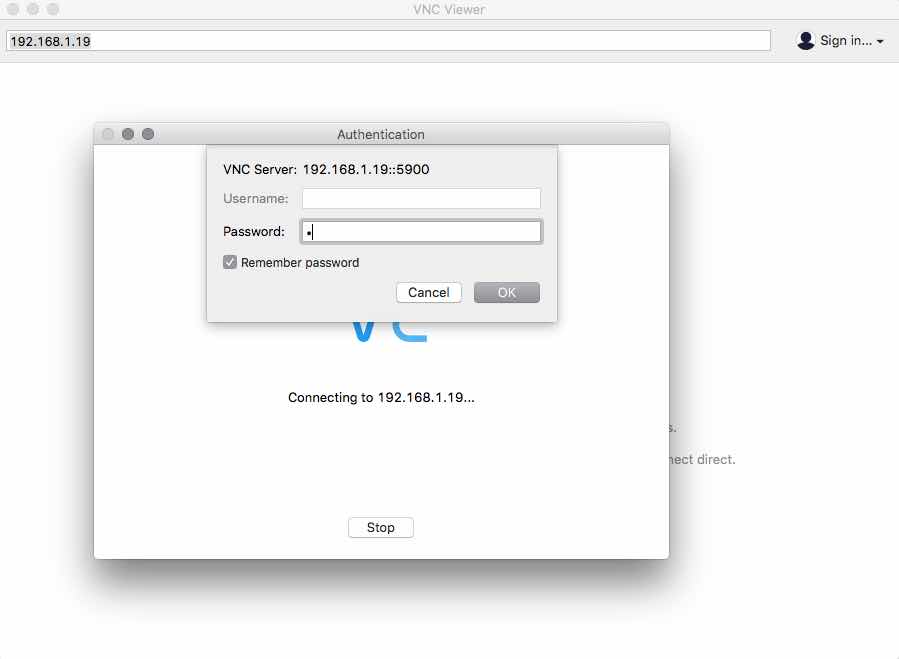
You are now connected!
At this point, rename the connection. Close out and find it in the address book.
Click on it and click Cmd+I to pull up properties (or right/two finger click).
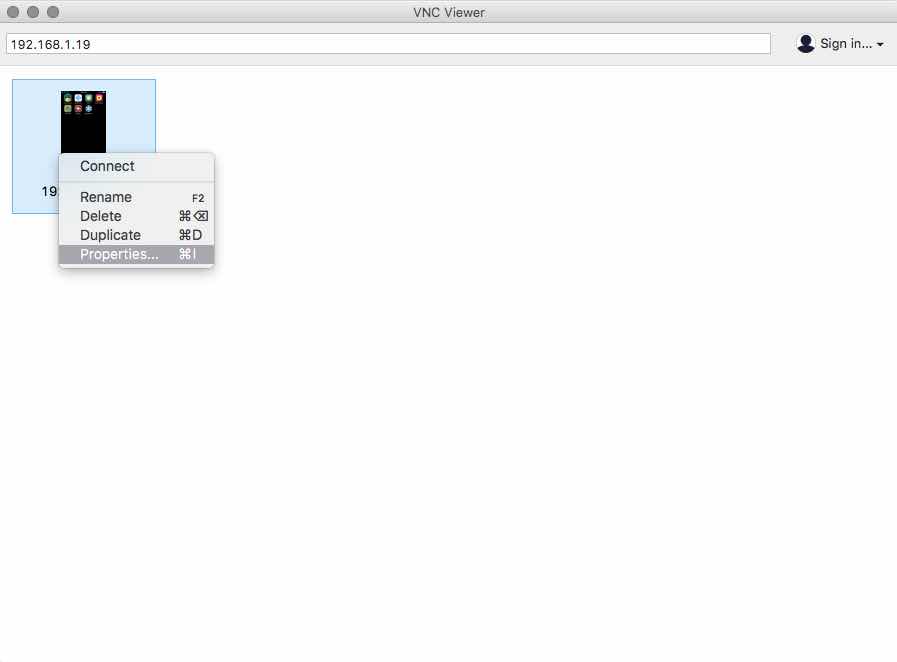
Put in a friendly name below the IP address (e.g. 19 for device #19).
I usually name mine according to my cash device naming system.
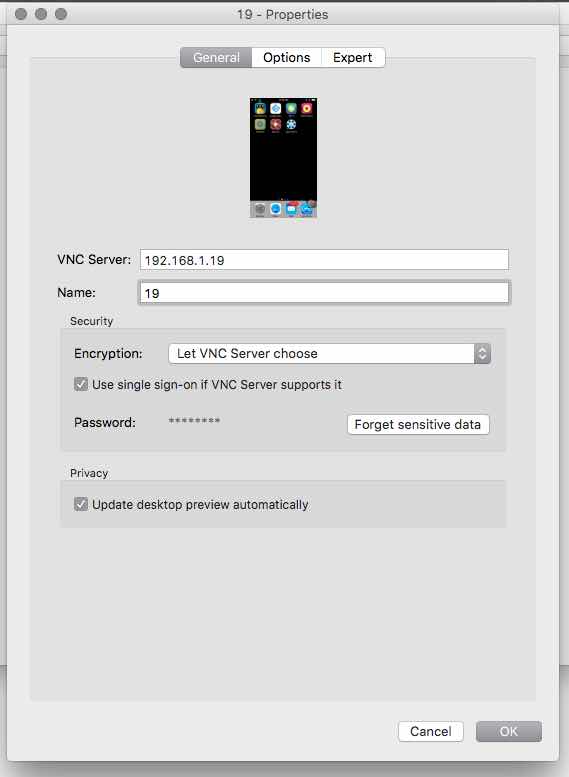
I also export my connections. Click file in the toolbar, export connections. This exports everything so if you have more devices, you might as well set those up first.
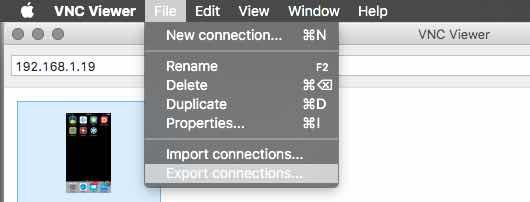
I recommend exporting these VNC files to a Dropbox or Google Drive folder so you can use them on other computers.
Controlling from Outside Your Network
In order to control this device from outside the network, I recommend setting up a VPN on your router. You can then use the same IP address you used above to connect to the machine as long as you are connected to your router via the VPN on the device controlling.
I will have an example soon on how I set up a VPN with my router, but how you can set up a VPN on your router depends on your model. Every UI is different. You will have to research your model for how to set up a VPN on it.
